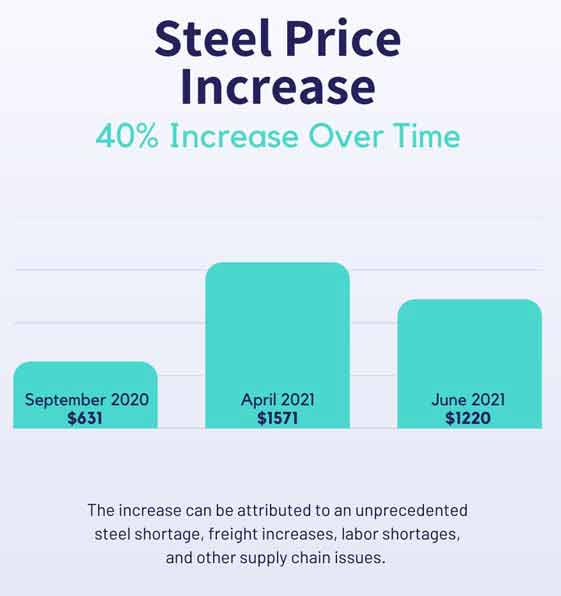The distribution of garage door products, such as overhead garage doors, openers, springs, parts and hardware, typically starts with raw material suppliers and manufacturing facilities. These products are then transported through distributors or logistics companies before reaching retailers, contractors, and garage door repair companies. This process constitutes the garage door supply chain, which has faced ongoing disruptions and shortages due to the 2019 COVID pandemic.
The Covid-19 Supply Chain Disruption and Shortages
The supply chain has indeed been affected by a global disruption, resulting in a shortage of essential building materials. This scarcity has caused prices to rise significantly within the garage door industry and the broader construction sector.
The global disruption in the supply chain can be traced back to the effects of the initial wave of the coronavirus pandemic. This wave led to the closure of seaports and factories around the world, including China and Italy, further complicating the situation.
United States seaports, including the port of Long Beach, became congested with containers filled with goods and products that couldn’t be shipped out. Furthermore, a shortage of labor emerged as truck drivers, train crews, warehouse workers, and many others were unable to leave their homes due to national curfews and the need to stay safe amid the pandemic.
The supply chain disruption and shortages continued through 2022 with the arrival of the Omicron variant, which has led to new restrictions among shipping ports and borders.
Tight Steel and Lumber Markets
In an effort to address the shortages caused by factory closures and delayed product deliveries, contractors and construction companies recognized the need to stock up on essential products, especially raw materials like steel and lumber. However, this approach only increased the pressure on the supply chain due to the heightened demand for raw materials.
Referring to the American Iron and Steel Institute’s report in late 2021, “steel production reached a staggering 73 million net tons, marking a significant 20.2% year-on-year increase.” Despite this remarkable growth, steel manufacturers continue to grapple with the challenge of meeting the continually rising demand for steel. This disparity between supply and demand has led to scarcity and subsequently an ongoing increase in steel prices.

Just like steel, lumber also experienced a steady and consistent increase in price, primarily due to rising demand and constrained supplies. This issue can be attributed to a sudden surge in home building across the United States, as well as the increased need to stock up on lumber due to concerns about excessive tree cutting and its negative impact on the environment.
The Disruption Effects on the Garage Door Industry
The supply chain disruption also impacted the garage door industry. Manufacturers faced difficulties in sourcing essential materials and supplying garage doors and hardware to installers and repair professionals. This resulted in shortages of garage doors, springs, openers, and replacement parts, affecting their capacity to fulfill customer demands, disrupting new construction projects, and leading to price increases due to the scarcity of steel, wood, and aluminum required for manufacturing garage doors.
Another factor that exacerbated the issue was the delay in transporting materials. This delay was partly caused by a shortage of truck drivers, but also crossing interstate borders became challenging due to coronavirus restrictions. A delay of two to three days in the delivery of materials used to manufacture garage doors often resulted in weeks of setbacks for garage door repair and installation projects.
Shortages and Price Increases in the Garage Door Repair Industry
Overall, the Covid-19 shortages not only caused disruption in the supply chain but also sustained price increases of raw materials, garage doors, parts and hardware, and garage door repair services. For example, if a basic garage door installation used to cost around $900 prior to Covid, as of 2024, the price has doubled. The price increase is attributed not only to the shortages in materials such as steel, aluminum, and lumber but also to rising production costs, increased demand, tariffs, fiscal policy during the pandemic, environmental concerns, and reduction in oil and petroleum production.







